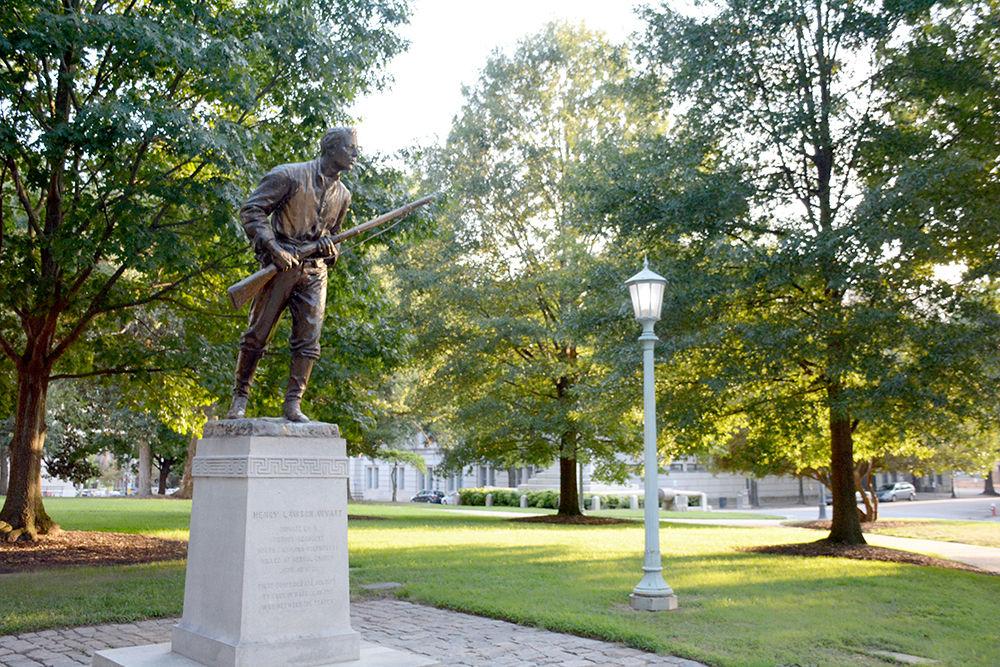Susanna Lee from NC State’s History Department is an expert in the history of the Civil War. Technician asked her about history and context of Confederate statues, such as the one at the capitol in downtown Raleigh.
The entire interview with Lee was released Monday as the first bonus episode of one of Technician’s new podcasts, Dialogue with Technician. Here is an excerpt from that interview.
The Southern Poverty Law Center says that there are around 1,500 Confederate statues in public space still in existence in 31 states across the United States. Also, North Carolina has more than 200 Civil War memorials, statues and markers according to Commemorative Landscapes of North Carolina, a project at UNC-Chapel Hill library. Most of the 54 statues and 20 memorials honor Confederates.
Where do these statues come from, and what was their motivation to be put in place originally?
You have a couple different waves of memorialization of the Civil War in the aftermath, especially in the South, but across the nation. In the immediate aftermath of the Civil War, Southerners really didn’t have the funds to do much memorialization, but what you did see in the late 1860s and 1870s were monuments that were put up in cemeteries, and those were specifically placed there to memorialize the Confederate dead.
Usually, memorial organizations or communities would place those in cemeteries in the aftermath of the Civil War in order to memorialize Confederate soldiers who had died in the Civil War.
And then, at the turn of the century, you have a really large wave of memorialization, and these and later monuments placed in the mid-20th century are really the source of public controversy today. These were monuments that were placed outside courthouses, outside capitals. They were not placed in cemeteries, but they were placed outside sites of governmental power and authority, and they were often placed there not specifically to memorialize the Confederate dead in the same way in which these cemetery monuments were, but instead as a way to reassert white supremacy.
You see this going on at the same time as you have, for example, the white supremacy campaign in North Carolina, which resulted in a massacre and a coup in Wilmington, NC. [It also resulted in] the disenfranchisement of black male voters.
And then, you have another wave that comes in the mid-20th century in response to the Civil Rights Movement for similar reasons as a reassertion of white supremacy.
And so, often times, you see these monuments — especially these later ones — were not so much about the Civil War, but were really more about the political contests of the time in which the monuments were put up.
…
In past years, particularly in 2015, there was a shooting in Charleston at the church Emanuel African Methodist Episcopal Church that resulted in calls to remove the Confederate battle flag, and its removal occurred later in that July.
In that same July, in North Carolina, Gov. Pat McCrory also passed a law that would make it more difficult for people to remove statues or memorials in the state without the legislature passing a bill to do so.
Is there any comment about this and how it was affected by these ideologies? Was this in an effort to preserve the history or the ideologies of these statues? Do you have any theories on that?
It seems that the state legislature was concerned that some of North Carolina’s monuments on public property would also be taken down and they were acting to prevent that.
As you also may know, there was also a Unite the Right rally in Charlottesville, Virginia, months following the city council’s vote in the city to remove the Robert E. Lee statue from what they renamed Emancipation Park.
The statue was staged to be removed by that vote, and this Unite the Right rally resulted in the death of three people and many others who were injured, and at this point, many other states feel motivated to remove Confederate statues to prevent similar violence and riots from occurring.
Do these alt-right motivations have any connection, do you believe, with the statues’ original installation and the ideologies that were promoting their installation in the first place?
I’m not sure that the neo-Nazis and white supremacists care that much about the Civil War. You have a sense of Confederate veterans who very clearly care about whether the Civil War is memorialized. I think some of these neo-Nazis and white supremacists are using these Confederate monuments as a staging ground — or flash point — or using the controversy in order to publicize their movement.
It makes sense, the choice of these Confederate monuments, because they were put up to undergird these white supremacist regimes that we today know as the Jim Crow South, and so the choice of these monuments make sense, but at heart, they’re less interested in the Civil War and more interested in the present day and their visions for a white nation.








